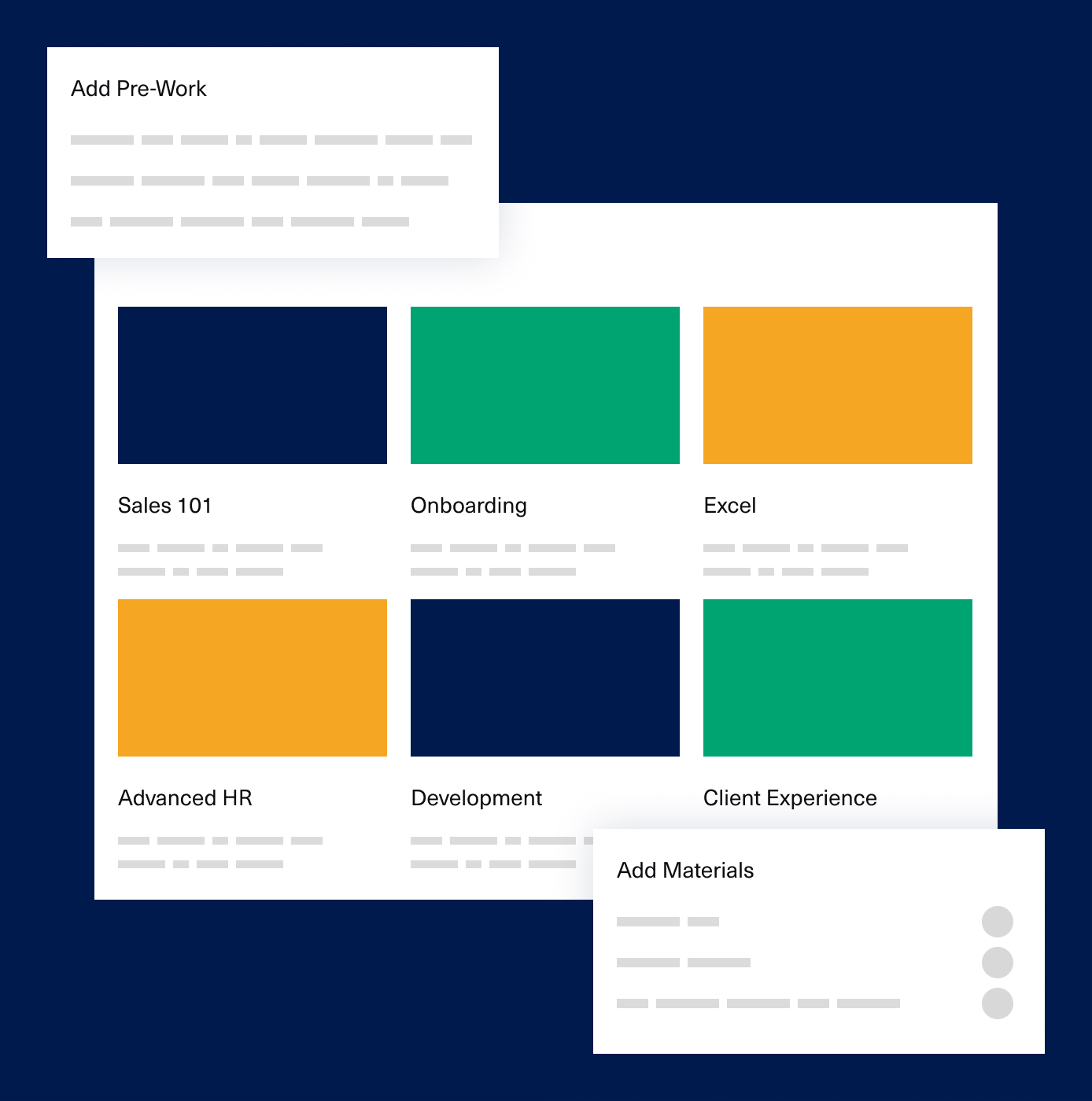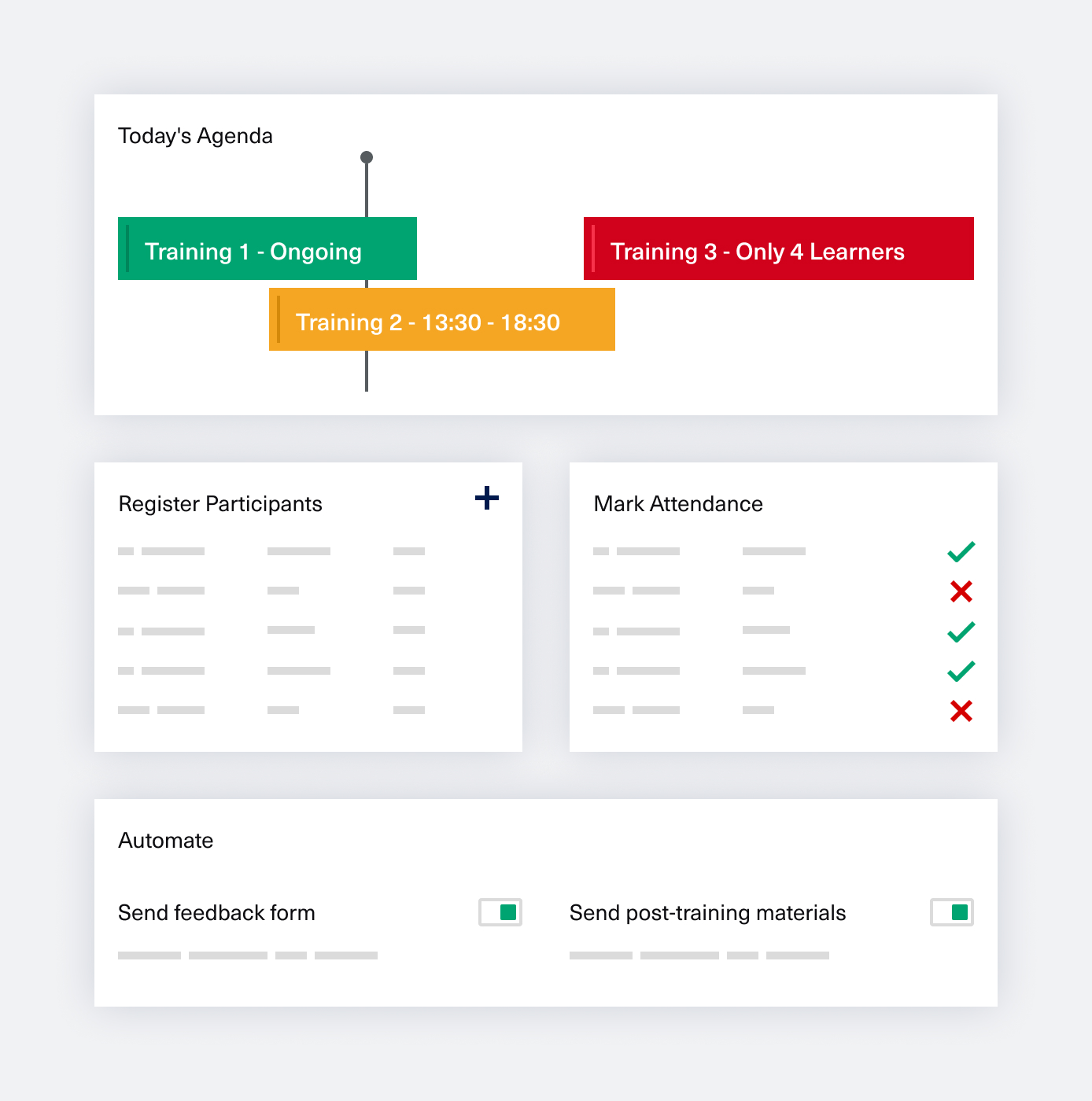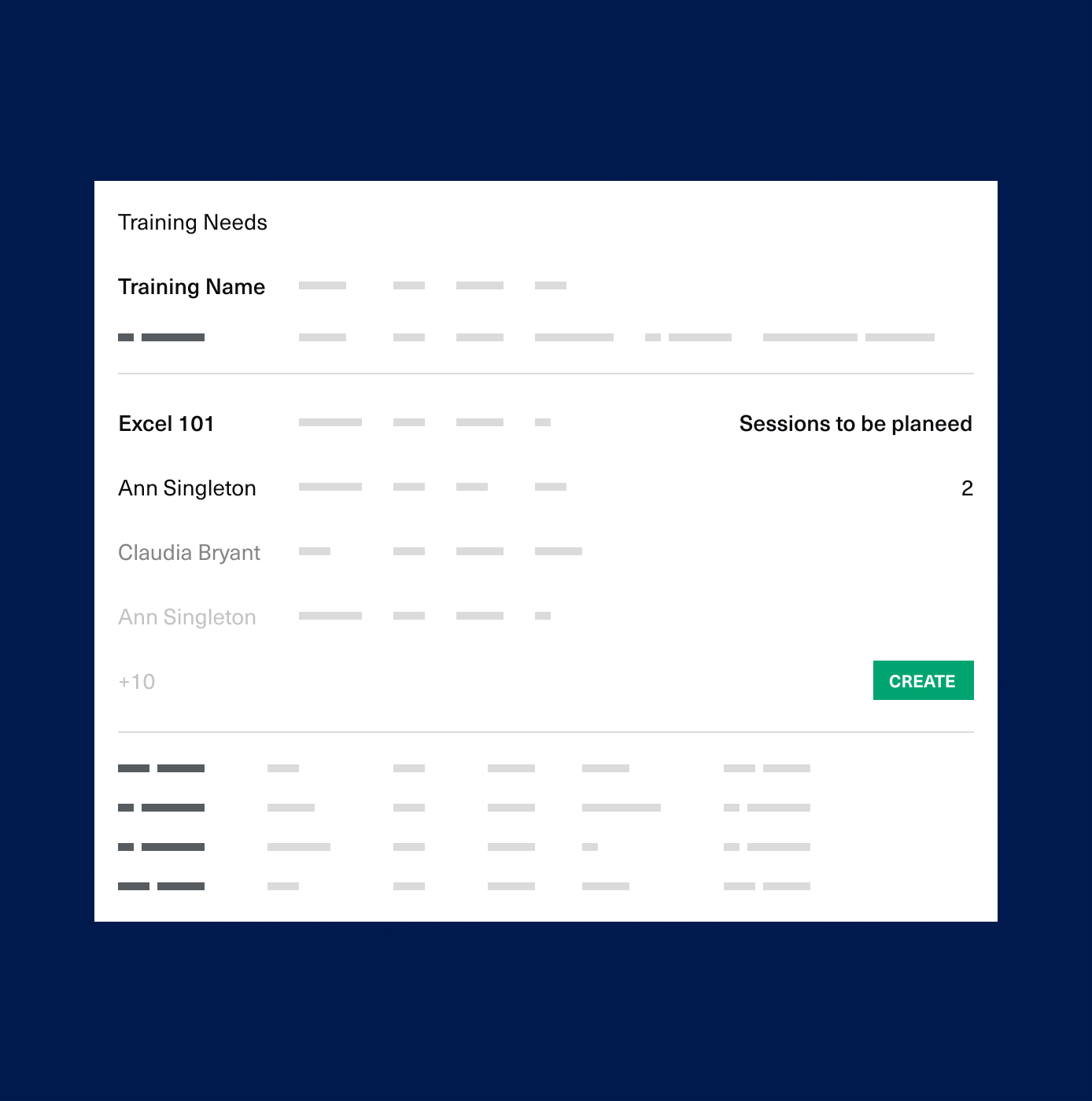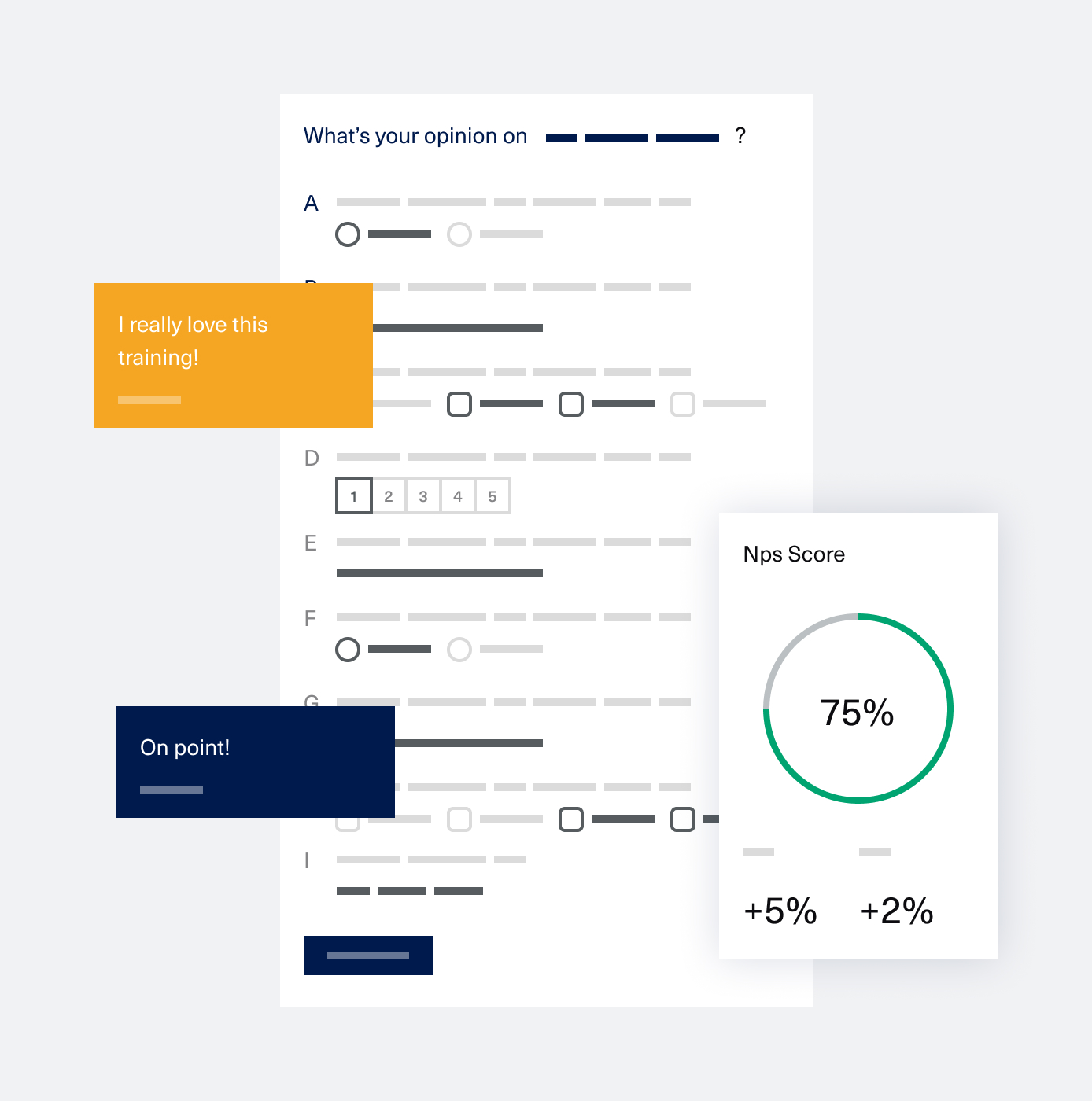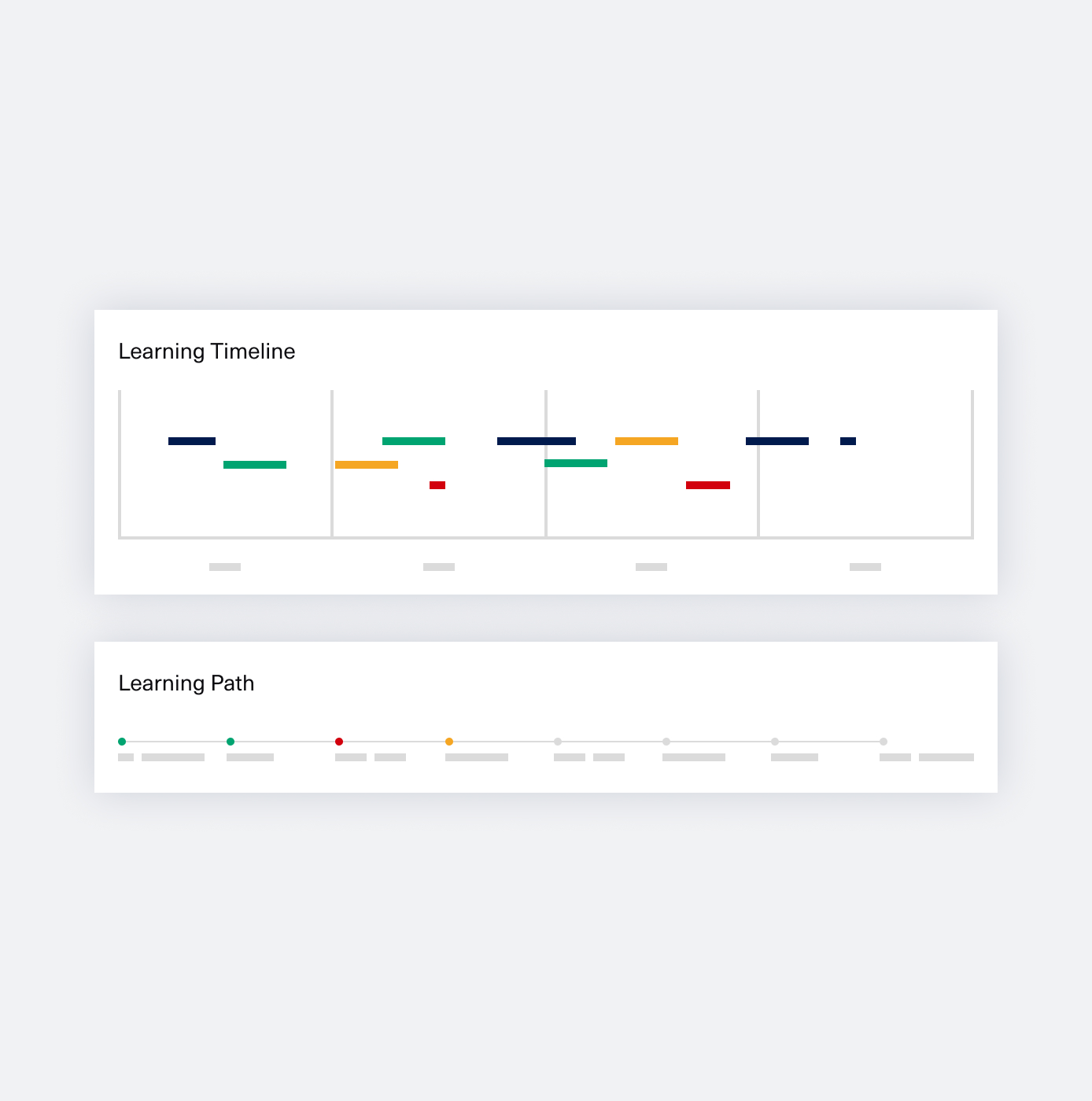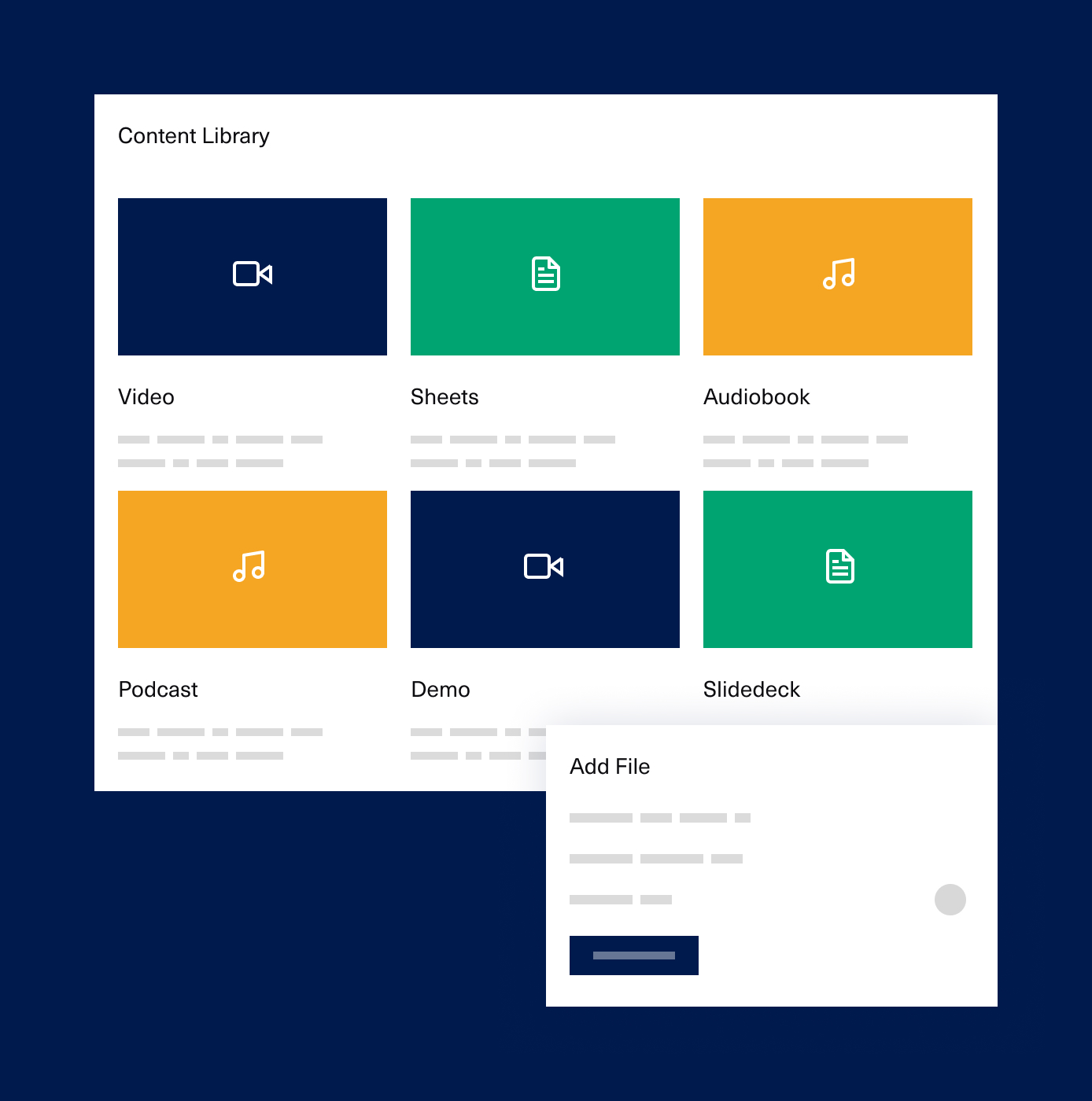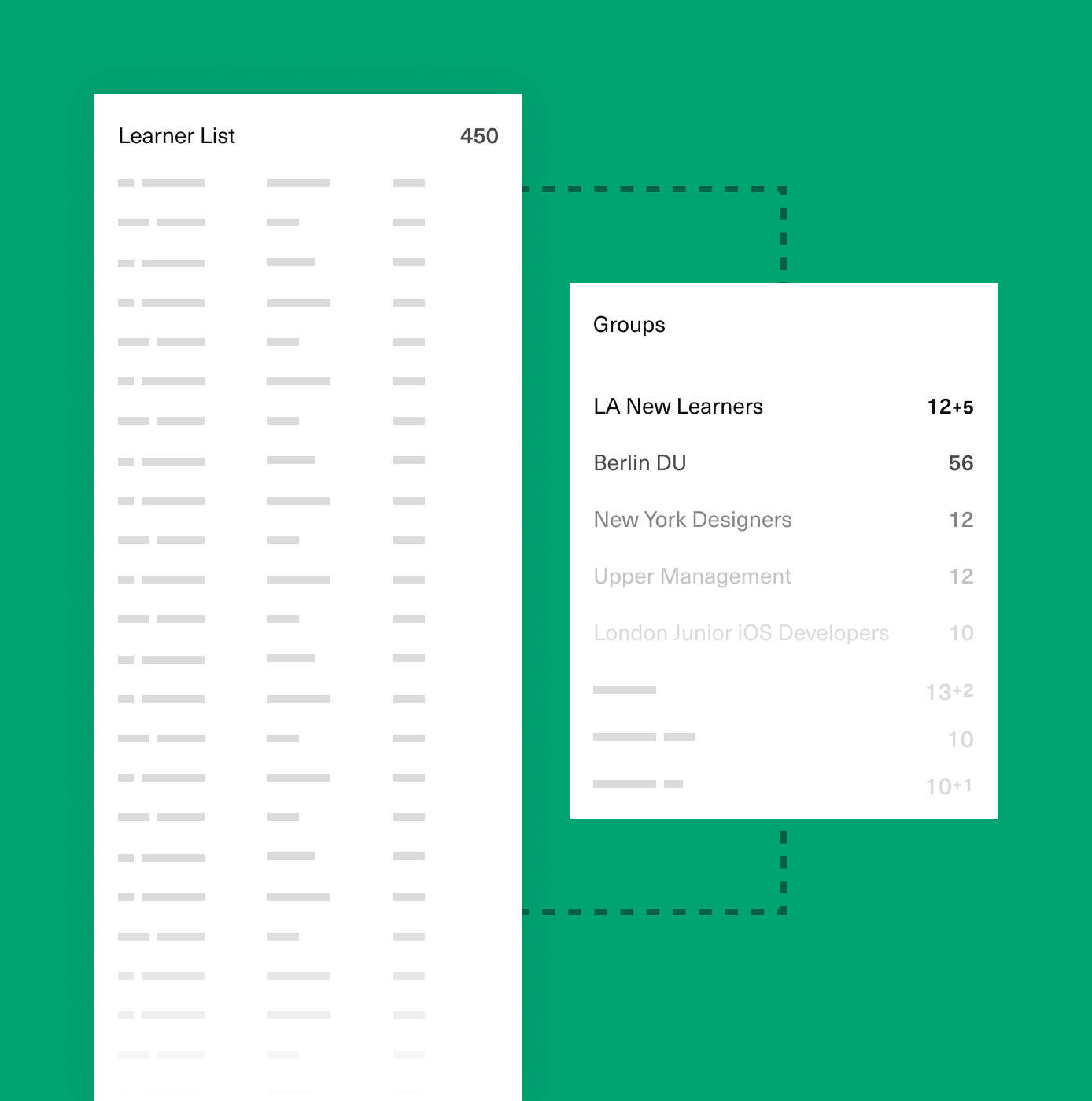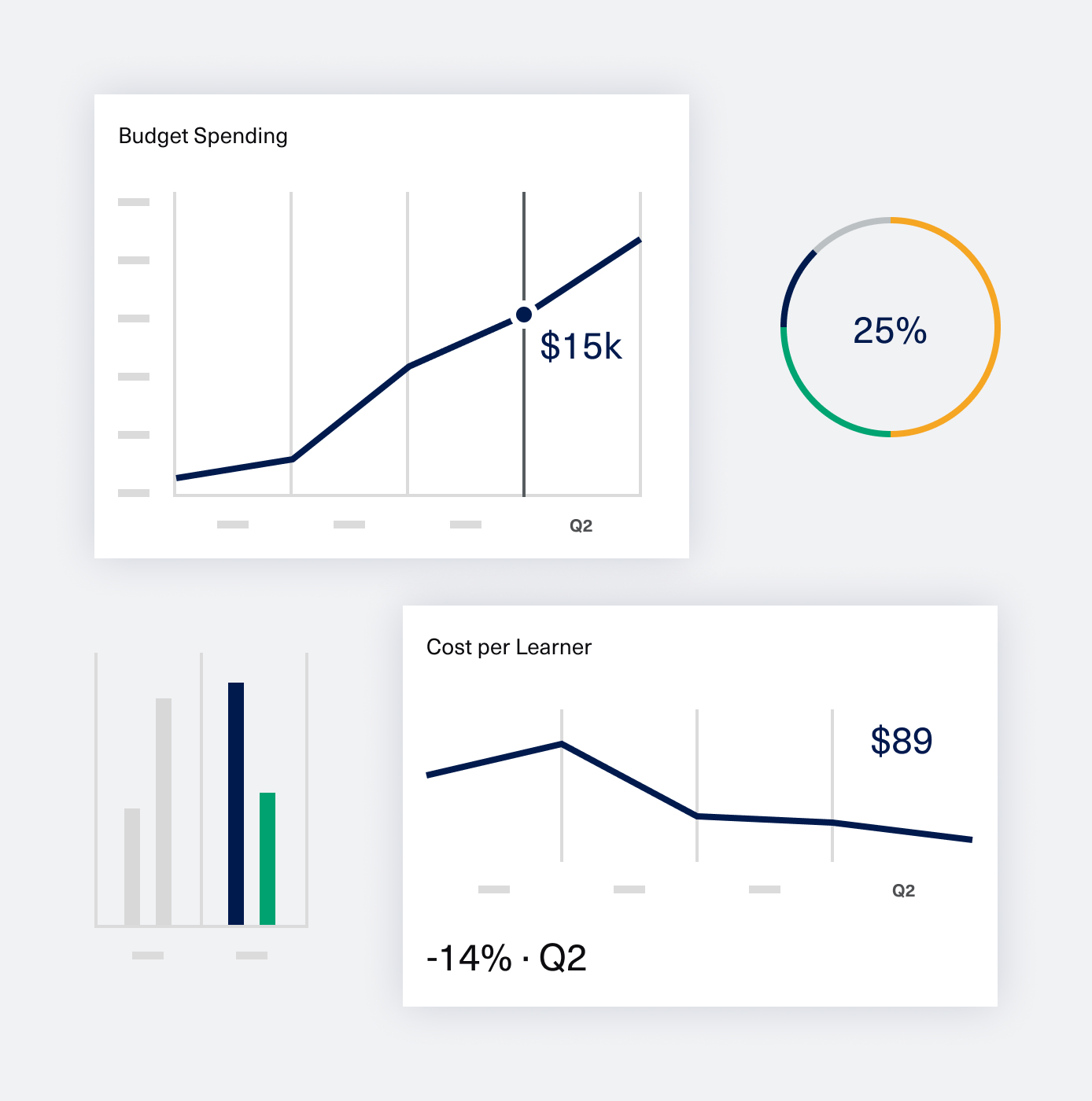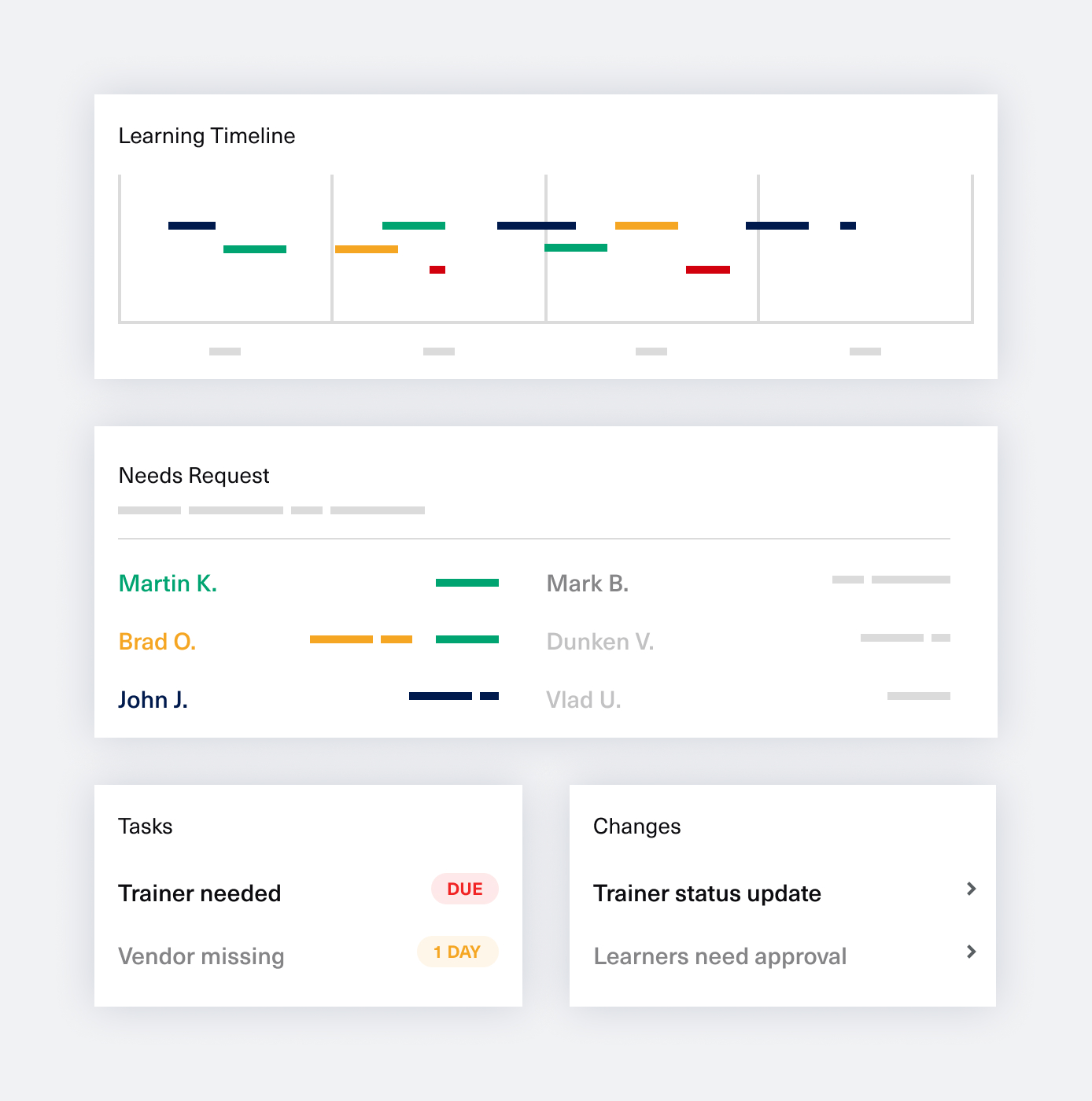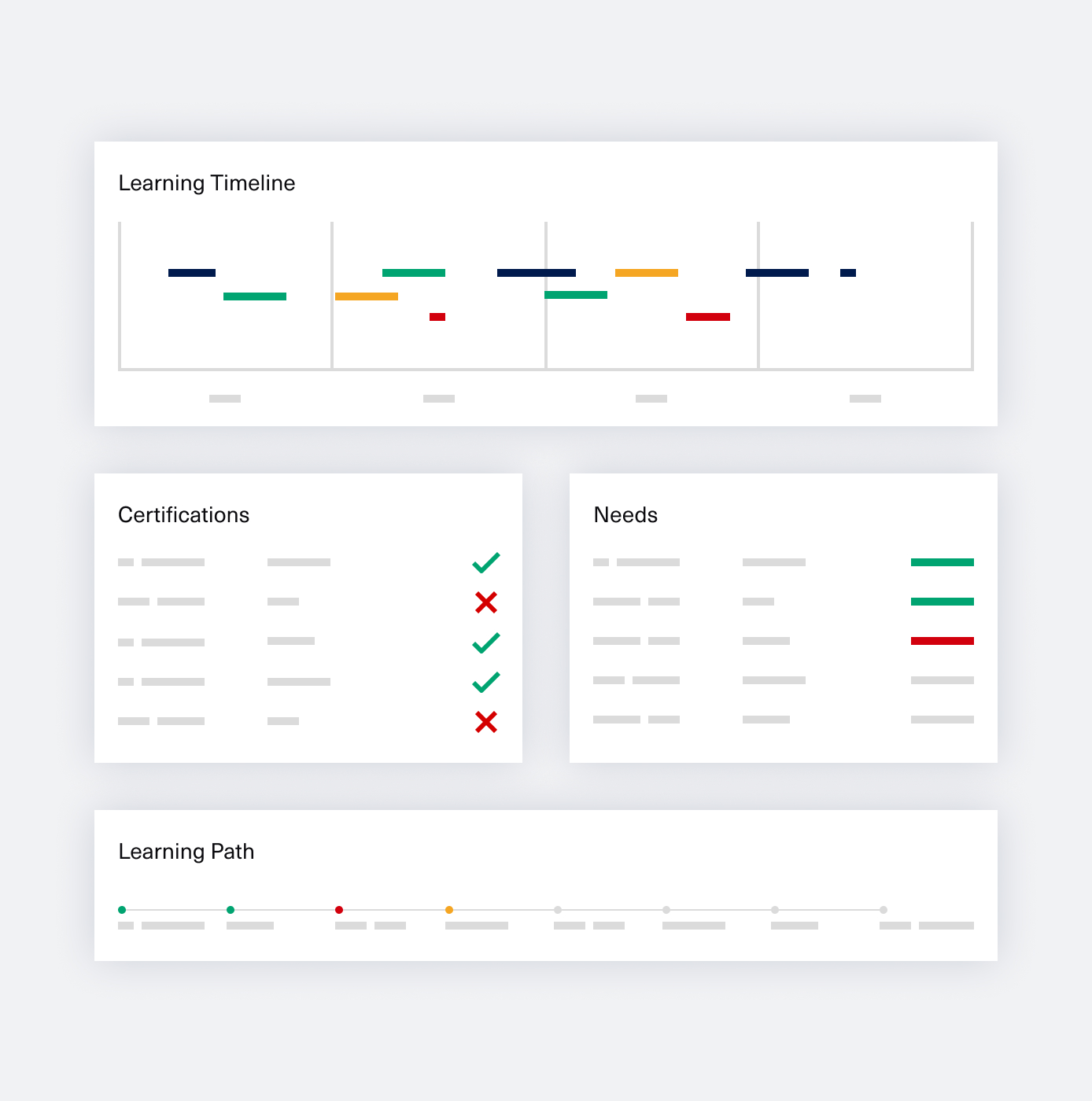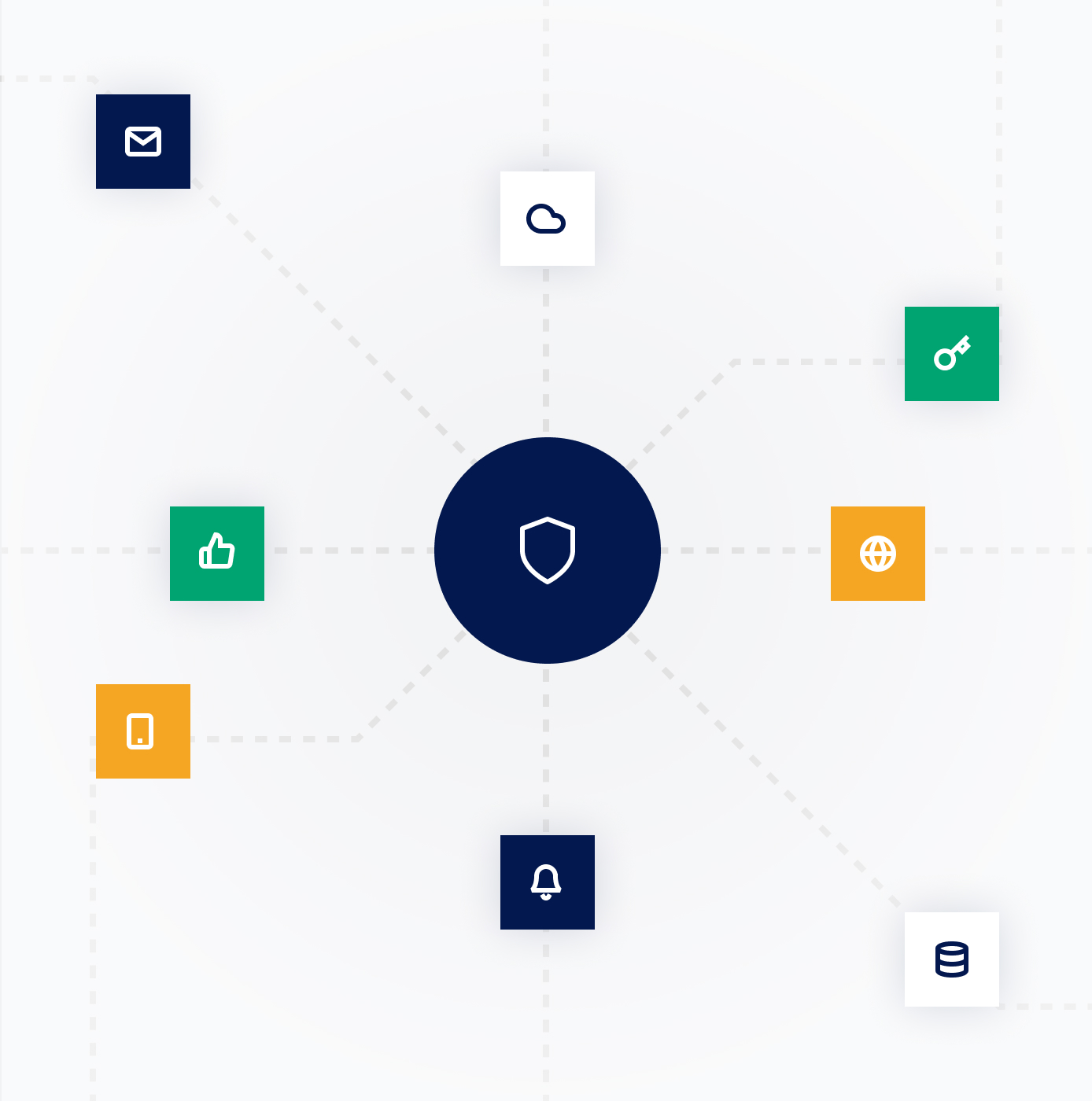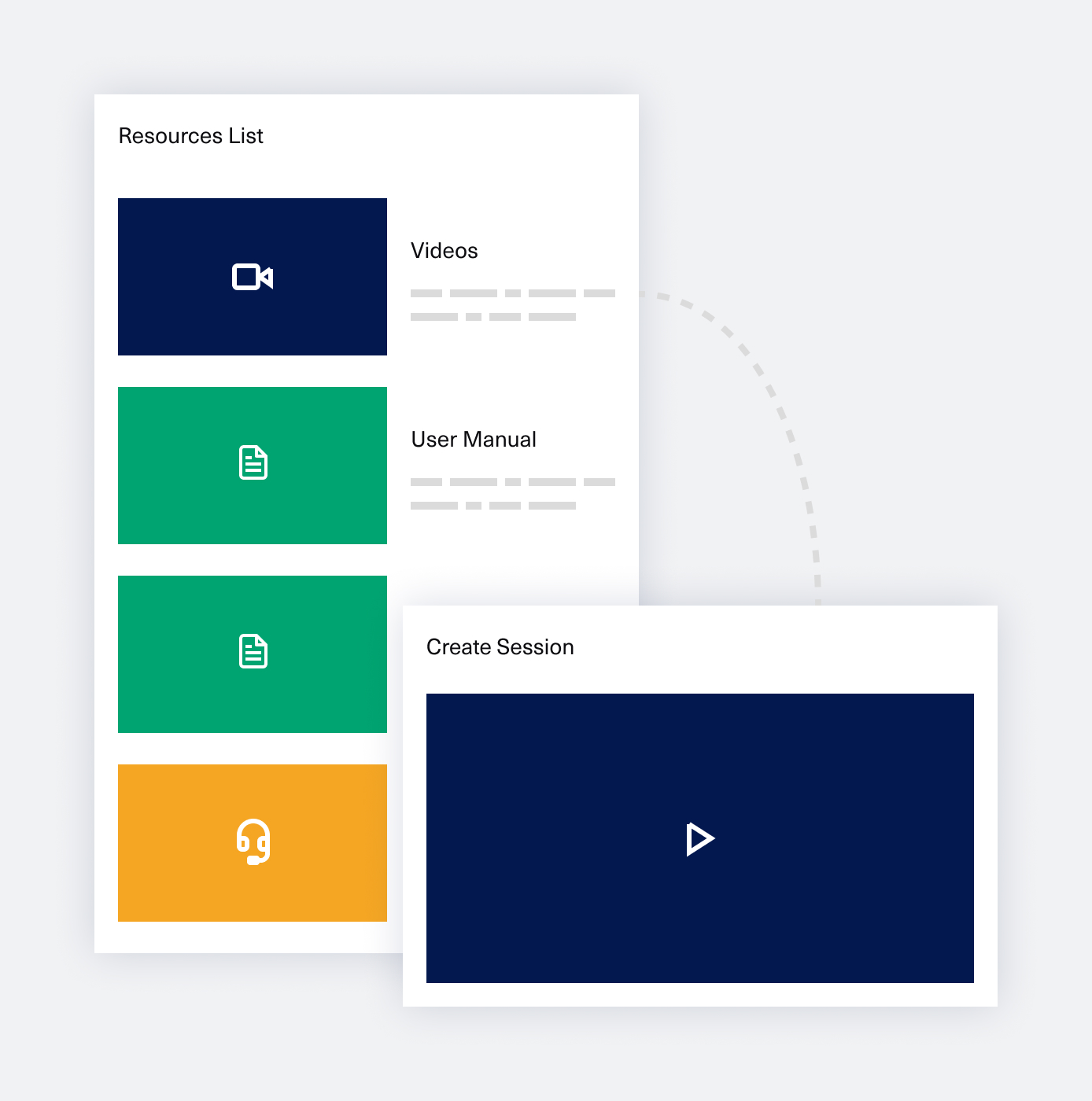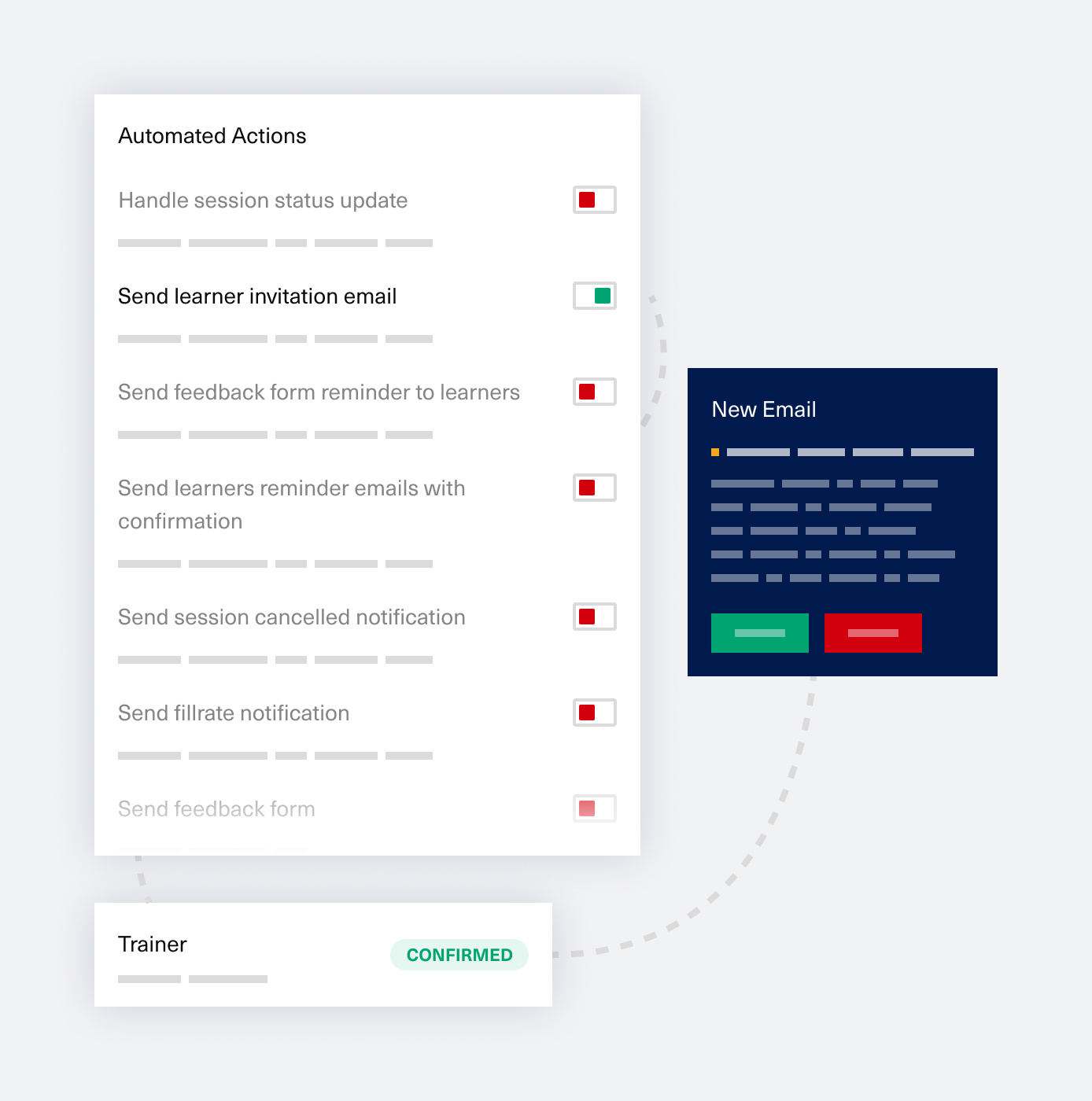Highlights:
* Cohorts are a method of offering knowledge to the same group of people synchronously, over a pre-defined amount of time, until the delivery goal has been reached. It’s very similar to how formal education is currently offered to children and young adults.
* This teaching style has become the default method since the Industrial Revolution, as explained by Sir Ken Robinson in his RSA talk on changing education paradigms. In his speech, he highlights how this teaching paradigm no longer serves current and future generations of children; this finding is also relevant for adult learning. There’s a fun animation based on this talk that you can watch here.
* It’s hard to make a case for offering cohort-based learning programs in general. The potential, apparent benefits of learning synchronously (for example, relying on your peers to keep up with the class and stay engaged in the learning process) are offset by each individual’s need for a personalized learning experience. The reality is that each person has their preferences and style of acquiring knowledge, which sits at the core of self-directed learning.
When to use cohort-based learning programs:
1. Particular situations where a group of people with the same learning objectives and level of knowledge/skill must go through a learning activity with a well-defined goal in mind.
2. Some examples include compliance scenarios or situations when your organization launches new products or services and must quickly bring its employees up to speed.
Highlights:
* Daniel Kahneman’s book “Thinking, Fast and Slow” shows us that humans are irrational creatures who rely on two systems to make decisions. If adopting a new behavior requires too much cognitive power from the brain, it will default to the so-called fast system, which is biased and unreliable, thus failing to change.
* Nudges are a tool that enables easier behavior change by removing decision-making friction with the help of choice architecture. Richard H. Thaler explains this in further detail in his book “Nudge“.
* Humu has a ready-to-use library of nudges for the workplace that L&Ds can use to kickstart their work with nudges in their organizations.
* There is no specific time frame in which people form new habits, as previously thought. It’s simply a question of how long it takes to make the new behavior automatic, thus no longer requiring the slow system to burn too much energy to execute.
* Nudges should be subtle enough not to distract the recipient’s attention, which means that nudges must be very well immersed in the person’s work context not to become spam.
* Nudges are more effective than formal training or eLearning for impactful behavior change. Still, they should be part of a complex ecosystem that contains communities of practice, mentoring, knowledge sharing sessions, coaching, and other L&D methods. No one L&D method in isolation is sufficient to produce long-term, lasting results.
How to start working with nudges in your organization:
1. Start with behaviors that you already measure in employee engagement surveys or the 360 feedback process and develop campaigns relevant to this context.
2. Put in place nudge campaigns for specific cohorts and, once implemented, determine how much of the campaign was observed by employees through interviews and data analysis. Remember that nudges are subtle by design, so lack of feedback might mean one of two things: either the information was received but not remembered, or it was not acknowledged at all.
3. Observe changes in behavior by way of data gathered to see if the cohorts exposed to nudges exhibit a different behavior to those not exposed.
4. Remember that you must personalize nudges to the employees’ context; otherwise, they risk becoming overbearing and ineffective.
5. Experiment, iterate and learn from the data you’re gathering to understand how many nudges are just enough to start producing results without becoming a distraction.
6. Some nudge mechanisms might require a lot of time and resources to implement, so start small and gradually build your business case to expand this new tool to new, more complex behavior change goals.
Highlights:
* The L&D team typically sits between two business environment extremes. One side is when L&D is entirely disconnected from the business’s objectives and metrics. The other one is when L&D is a true business partner and actively contributes to improving these metrics.
* L&D should take specific action to measure the impact and effectiveness of learning programs and find out ways to promote these positive results.
* L&D can invest time and effort into getting closer to the business, understand the language, immerse itself in the operational departments to understand their context.
* Having a separate L&D thread from business objectives like revenue streams or cost optimization is the single most negatively impactful activity for L&D’s image.
* Showcasing L&D value to the business is a gradual, slow process, as it has to do with other stakeholders’ behavior and perception change – not different from the process of learning itself.
* An excellent L&D professional is brave and assertive in promoting the value of their team and knowledge.
* The essential factor that L&D brings is the deep knowledge and understanding of adult learning principles. L&D is the expert here, and this is where it can make the most significant contribution.
* Doing a premortem analysis before launching a new learning program or technology is the best way to prepare for a conversation with decision-making stakeholders.
* L&Ds must keep their consultant hat on when speaking to business stakeholders, making sure they consistently ask the right questions, then measure the impact of L&D programs and feed it back to the business.
Reasons why the business might not fully understand the value of L&D:
– L&D is not trying enough to prove value by showcasing good examples or metrics to the business.
– L&D is not speaking the business language and does not have common points on which to relate to the business.
– The business does not have a formal learning culture and only relies on informal learning interactions.
Highlights:
* Cathy Moore’s flowchart is a good starting point to help guide L&D professionals in understanding whether knowledge or skill acquisition can solve a specific business problem – as seen in Offbeat Issue #64
* The business will likely come to L&D with a request for a training session or learning content when employee performance decreases or errors are identified.
* L&D’s are better equipped than the business to identify if a learning intervention helps solve a problem by playing the role of a consultant.
* Asking the right questions is an excellent way to help the business identify the source of a problem.
* Especially in these situations, L&D can work together with people managers and operational teams to understand the root cause and identify an effective solution.
* If the business still insists on receiving a learning intervention, L&D must set the right expectations about the very limited expected impact of that intervention – advice coming from Anamaria Dorgo, founder and community catalyst of L&D Shakers and Butter.
L&D can showcase its value to the business by:
– putting in place a consistent consultancy process, which is especially important for more junior L&D roles
– interacting openly with all levels of the organization and asking for support in promoting the way L&D works, especially in hierarchical organizations.
– creating case studies from previous business situations, together with the alternative solution identified.
– advertise to everyone in the company, especially decision-makers, how adults learn, the time it takes to see behavior changes, the real impact of learning.
When is L&D not the solution?
– When documentation or procedures are not put in place or are incorrectly created, employees can’t execute their tasks, which can seem like a performance issue.
– If employees don’t feel safe or comfortable at work, they might have performance issues that don’t come from a lack of knowledge or skill; in this case, even if a learning intervention is decided, it will likely not be effective. Learning is one of the first things compromised when there is no psychological safety in the workplace.
– Lack of resources, such as access to people, tools, or the right level of influence to unblock a problematic situation, which might hurt individuals’ performance.
Highlights:
* Psychological Safety is the belief that you won’t be punished or humiliated for speaking up with ideas, questions, concerns, or while making mistakes.
* Amy Edmonson’s research paper sits at the basis of the concept of Psychological Safety as the main influencing factor in team effectiveness and learning.
* Google also did a research project called Aristotle on the same topic; they offer a framework and free tools for any organization to start fostering Psychological Safety in teams.
* Adam Grant and Melinda Gates put together an experiment at the Gates Foundation. They asked leaders to show vulnerability by talking about their mistakes to create a more welcoming and trusting work environment.
* Radical Candor by Kim Scott also touches on how leaders can create an open and honest working environment by showing people that they care personally while offering feedback or having difficult conversations.
* L&Ds can help create psychologically safe working environments in their organizations. First, by identifying issues with trust and belonging on the various teams they support, then by helping executives and team leaders understand the importance and effectiveness of being supporters and promoters of psychological safety on their teams.
* The absence of Psychological Safety prevents employees from focusing on learning since they’re using their cognitive resources on workplace survival rather than acquiring new knowledge.
* The biology of how the brain works also supports this: learning and going through new experiences protects and improves the neurons’ myelin sheath, enhancing cognitive function – more details about the science behind this in Amy Edmondson’s book The Fearless Organization.
How to foster Psychological Safety:
– Leaders should show vulnerability to the organization
– Mistakes are seen as learning opportunities
– Showing concern for colleagues on a personal level
– Creating a sentiment of mutual trust and belonging within the team
– Encouraging people to step out of their comfort zone
What prevents Psychological Safety in the workplace:
– Public shaming or shaming in general.
– Punishing mistakes instead of recognizing effort made and focusing on points of improvement.
– Putting on a brave face even when it is unnecessary, for fear of being judged or ridiculed; not showing vulnerability.
Highlights:
* Business Acumen is a combination of skills and knowledge that, summed up, explains how well an L&D professional understands the business they operate in. Having Business Acumen means understanding how that business makes money, what it spends money on and what drives business performance.
* L&D’s role is to support business performance either by driving down cost or driving up revenue through skills and know-how development.
* Having Business Acumen builds organizational trust in L&D.
* L&Ds don’t typically have this know-how for two main reasons: the main focus of L&Ds professionals is psychology-oriented, and the business’ expectation of L&D is to execute upon request rather than to advise.
* To acquire Business Acumen, L&Ds can: expose themselves to the operational and financial teams’ work, take part in projects to practice business-specific skills, or learn about the industry from external sources (i.e., domain research papers, articles, podcasts).
* Understanding business metrics and KPIs directly from operational and financial teams is essential for building them into effective learning interventions.
* Prototyping learning interventions together with operational and financial teams ensures a close connection between business growth and learning.
* Measuring the impact of a learning intervention is easier when you build business KPIs into learning program prototypes.
* Understanding what drives a domain, a business, or an employee is the best way to exercise the support role that L&D has towards an organization.
Business Acumen as a form of knowledge:
– Understanding the business model
– Knowing the drivers of profitability and cashflow
– Understanding the interdependencies of the various business functions
Business Acumen as a skill:
– Knowing how to act based on the information above
– Proposing and implementing L&D solutions that fit the need identifies
– Forecasting the impact of these solutions and measuring results
Highlights:
* The accelerated adoption of technology and automation is affecting the way we work; Future Skills enable employees and companies to cope with these changes sustainably.
* With the pandemic as a catalyst for change towards digitization, the way organizations and people acquire skills has drastically changed.
* Current formal education is not preparing young people to deal with how complex life can be, both professionally and personally, as it is designed based on an industrial mindset. Learning is not personalized to the individual.
* People who now join the workforce can expect to change careers seven times over the course of their adult life.
* Future Skills are relevant for employees at any step of their career, not just for young people joining the workforce. It is not a matter of age but instead of experience and each individual’s mindset.
* L&Ds can gauge the adoption and practice of Future Skills in the company by relying on People Analytics to track improvement in business metrics and behavior changes.
* People Analytics helps L&Ds measure access to learning resources, career growth opportunities, internal transfers, engagement, retention.
* More resources can be found by following Kevin Yates, Sam Allen, and software products that focus on People Analytics: Culture Amp, Lattice, Nifty Learning.
Future Skills essentials:
1. Adaptability, being able to welcome change
2. Intentional learning – shared by McKinsey in August of 2020 and updated with a practical guideline published here, as seen in Offbeat Issues #13 and #47
3. Growth mindset
4. Innovation, Resourcefulness
5. Data Awareness
Highlights:
* The initial research done by SMEs points out precisely what knowledge gaps there are and where colleagues need the most support in an unbiased manner.
* SMEs should avoid one-time events and instead create a learning experience that relies on spaced repetition.
* Learning experiences based on real-life practice allow learners to spot their knowledge gaps and come back with questions. This behavior informs the SME on what concepts to reinforce in future learning interventions.
* Creating an effective learning experience takes a long time and significant work, so SMEs could be tempted to create one-time events and then stop; checking in with colleagues and seeing their progress can help SMEs stay motivated.
* To create practical soft-skills learning experiences (which are more challenging to measure than hard-skills learning experiences), that initial research is essential, as it helps precisely define the expected business outcomes and behavior changes.
* Not all business problems can be solved through learning interventions – this is a frequent misalignment of expectations that L&D teams face. SMEs are best equipped to spot the difference, more so than managers or other people from the business.
Steps to create an effective Learning Experience:
1. Do the initial research to understand your learners and design an experience with business goals in mind.
2. Identify those solutions for your colleagues’ challenges that require learning new skills or acquiring knowledge.
3. Create a list of concepts relevant to the Jobs To Be Done, which you put in a logical order.
4. Start with basic concepts and add more complexity as you progress.
5. Use data to understand the impact of the learning experience:
a. the first layer of data is feedback or engagement – this can be misleading because of the initial excitement of attending. Therefore you need to dig deeper.
b. a second layer of data is found by re-doing the initial research and checking those business KPIs that link directly with the new knowledge acquired.
6. Look for behavior changes and improvement of results with a measurable impact on the business.
SMEs’ accountability to their peers:
A. In the short term, SMEs should adopt a Beginner’s Mindset and put themselves in their colleagues’ shoes to make sure they truly understand their knowledge gaps.
B. In the long term, SMEs should check in with their peers and see if they need additional support to ensure they achieve their goal of sharing their knowledge.
Highlights:
* L&D and HR roles in general need to be self-aware and keep learning and growing – both as an example of good practice and to help the organization most effectively at the necessary time.
* The primary value add of L&D is understanding how adults learn and creating or identifying the right experiences that support optimal learning transfer.
* L&Ds can keep up to date by learning on the job, getting certifications (where relevant and available – e.g., CIPD, LPI), accessing reliable sources of pertinent information (Offbeat and similar publications), and joining a community of like-minded professionals.
Skills to have as an L&D Consultant:
1. Ability to learn & adapt
2. Problem solving
3. Consultancy & asking questions
4. Tech knowledge
5. Analytics awareness
6. Understanding how adults learn
Highlights:
* In its HR blog, Spotify talks about being skilled at upskilling and the difference between a reactive and a proactive L&D – as seen in Issue 57 of Offbeat.
* Amazon has a strict one-page rule for writing business cases, which constrains L&D to be both efficient and effective when conveying the purpose of any new initiative.
* Keep a close relationship with the business, constantly do your research, and connect any new L&D initiative with relevant, measurable business metrics.
Outline of an L&D Business Case:
1. Describe the problem
2. Define the target audience
3. Add relevant quantitative & qualitative data
4. Explain the solution to the problem
5. Describe the costs involved (not just cash, but also time and other resources)
6. Show the implementation timeline
7. Add objectives and KPIs that you will track
Transcript:
Liz Stefan 0:05
Hi everyone, you are listening to L&D Spotlight, a podcast about learning and development brought to you by Nifty Learning. I’m your host, Liz Stefan, and together we’re here to learn about L&D.
We have an amazing guest today, Lavinia Mehedintu, she is People Experience Manager at eMAG and the creator and curator of Offbeat.Works. Thank you, Lavinia, for joining us!
Lavinia Mehedintu 0:31
Thank you for having me!
Liz Stefan 0:33
I was thinking today we could do something very practical, maybe even help our listeners to come out with a template out of this conversation. Let’s talk about building a business case for a new learning initiative. I think you might have done this quite frequently in the past, right?
Lavinia Mehedintu 0:50
I have some experience, yeah.
Liz Stefan 0:53
Okay. We know that a lot of the times the business comes to the learning team specifically for learning-related topics, and they have a proposal for a new learning program. In what situations does L&D actually go to the business with suggestions?
Lavinia Mehedintu 1:07
I was recently reading an article from the HR Spotify blog. It’s called being skilled at upskilling, which I really think all of us should at this point. And the author made a really, really good point about being a reactive L&D versus being a proactive L&D, and the case specifically was about upskilling. But I think this reactive versus proactive can come up in any situation, in any stage of an L&D career, you know. And to think about it really specifically, I think there are some situations when L&Ds really can be proactive. One of them might be after a needs assessment. The way you’re building your needs assessment process, which is ultimately a research process, will also determine how reactive or proactive you are. If you’re the one just waiting for people managers, for example, to come to you with the solutions they already thought about, which often happens as L&Ds, well, you are in the shoes of reactive L&D. What you can do is, as I was saying, build the needs assessment process with questions that lead people managers towards the problems, not the solutions. And when you do that, at the end of the process, you can have a brainstorming session with your team and come up with solutions. And that’s one situation where L&Ds can become proactive. Another one is looking at your own work. When you look at your own work and you think about how to optimize different parts of your daily job, I don’t know, a situation is you need a tool, you need an LMS such as Nifty, and you can think about this idea, you can feel that need that you have and go to the business and say: Hey, guys, we need this. The third one does not come from research or being aware of your work but comes out of your constant awareness about where the organization is, where it’s headed, and what the market also says about how the future of work will go, you know. And this comes back to the article I was telling about the beginning that says, okay, you can be reactive and the business comes to you when you’re reactive and tells you okay, “I need to build this skill or this skill or this knowledge and so on”, or you can become proactive and try and forecast what are the future skills that your organization needs, you know? So yeah, these are the three situations I can think of right now when L&Ds can become proactive.
Liz Stefan 4:20
Just on that last point that you made regarding observing trends and suggesting a new set of skills or a specific type of learning, obviously, L&D would need to participate in the company strategy, ideally, when it’s being created. But if they’re not consulted, at least to be aware of the company strategy and to observe which trends in terms of skills or you know, knowledge that needs to be acquired by the business, what kind of knowledge actually aligns with the company’s strategy, right?
Lavinia Mehedintu 4:52
Yeah, that’s right. You have to be aware of where your company is heading. L&D doesn’t necessarily have to be involved in the decision-making process, but keeping in touch with HR Business Partners or your VP of People, and so on, and, of course, with the people managers you’re consulting, will build this knowledge and this, this awareness and the environment, on the one hand. And on the other hand, I really think that, although we’re not in the business, and we read a lot about learning, we should also be in touch with where our industry or maybe competitors are going. And I don’t know, all kinds of articles reading, the Economist, reading McKinsey, Deloitte, to see how the industry will transform over time, and come up with ideas. “Look, guys, so they are going this way. If we’re thinking about this, you should know that we have to build those skills, maybe we don’t have them right now.” and so on.
Liz Stefan 5:55
Yeah. I think this actually touches on two points. One of them is being anchored in the present business-wise, and also having business acumen or understanding your company.
Lavinia Mehedintu 6:06
Exactly.
Liz Stefan 6:07
So that you are able to actually provide relevant advice and to understand what’s happening out there, to the point where you’re able to provide that relevant advice and that suggestion for this particular skill, or for this particular trend, right?
Lavinia Mehedintu 6:21
Exactly.Yep, exactly.
Liz Stefan 6:22
Okay. So let’s go into the practical aspect of this. What does a business case look like? What are the components, let’s say?
Lavinia Mehedintu 6:29
What we’ve done in the past is first to start by describing the problem as much as possible using quantitative and qualitative data, describing your target audience, looking really, really closely at the problem. After looking at the problem, you have to explain your solution. And when you’re explaining your solution, you have to go into, of course, describing it with text, then describing the adjacent costs. And when I say costs, it doesn’t just have to be money, you should look at other resources as well, like the time people spend in your program, that’s also a cost for your initiative. So think about all the costs involved in implementing that initiative. Then write about the timeline, how long will it take to design and implement the solution. And at the end, you have to talk about the objectives and KPIs you’re planning to track, you know, because the one that will read your business case is mostly interested in seeing what’s the added value that your program will bring to the business, to the organization, you know? So I would say use as many data points as possible, if you’ve done an MVP, or if you have a track record of doing something related to what you’re planning to do, just mention it. And honestly, Amazon has this interesting format, they have a one-pager, you know, so you have to write your whole business case in one page, which I have to tell you, from my own experience, that it’s really, really hard. You have to be as concise as possible in explaining both what you’re trying to solve and how you’re trying to solve it. And if you think about it, the CEO, the VPs of your company, have so much time, you know, they have to spend on reading stuff and on exploring new opportunities. So you have to be aware of how much time someone will have to read your business case. So these are my main thoughts on this.
Liz Stefan 8:57
Okay, so you really have to choose your words carefully, especially in this particular area. Essentially, when you say objectives and KPIs, these are the things that will shape the company or the things that will have the strongest impact that will reflect all the way down to improved business metrics and so on, right? So you should be very careful in defining these right?
Lavinia Mehedintu 9:21
That’s really, really important. You have to think about which are your company’s OKRs if you’re working with OKRs. You have to think if your department has some specific targets. Can you link your goals to those targets and objectives? That’s really, really powerful. And that’s something we’re trying to do as much as possible in our team. Usually, honestly speaking, you as an L&D might not be on your CEO’s agenda or a specific project might not be on your CEO’s agenda, but that doesn’t mean it’s not important. And if you’ve seen it’s important, you have to put all the effort into building a business case that will really get the attention of someone above you, you know?
Liz Stefan 10:19
Essentially, as an L&D, you have to be very effective in being your own advocate. If L&D is the one who proposes a new program, who is the end owner of that program’s success?
Lavinia Mehedintu 10:31
That’s a tricky one. You’re asking all the right and really hard questions. Well, I would say it’s a shared responsibility. Let’s say you’re building this career development program. And one of your goals is long-term retention, you know? And that’s an amazing goal and it’s definitely achievable. But if you look at all the studies out there, one of the main reasons people leave their jobs and their companies is not career development, it’s managers. So if I’m building this amazing, amazing career development program, but one or 10 of my participants don’t have, let’s say, the most amazing manager, that’s the main reason they’re going to leave. So my goal won’t be reached, but not because I haven’t done everything possible to keep those people, but because of other factors, I can or I can’t control.
Liz Stefan 11:41
I feel like all of our conversations ultimately end up being about culture. So I guess it’s fair to say that culture does play a very important role in a company’s acquisition of knowledge, regardless of the owner or promoter of learning initiative, right?
Lavinia Mehedintu 11:55
I think that culture facilitates L&Ds reaching their goals, you know, and ourselves. I think our programs impact each other in an unrelated way somehow, you know? Because if I come back to my previous example if I don’t have a strong leadership program that makes sure that my managers are equipped with all the tools and knowledge and skills they need to be amazing managers, other initiatives of mine won’t reach their goals. That’s one example. culture, definitely, how much time and how much attention people give to learning, informal or formal learning, is definitely also a huge factor in L&Ds reaching their goals.
Liz Stefan 12:46
Very well said, it’s almost like learning programs work in layers that support each other. So you have to have a very good foundation related to culture, things like leadership, things like how do we work, how do we provide feedback, how do we express dissatisfaction and still feel safe in the workplace. If I’m not mistaken, you touch on this in Offbeat quite a lot of times, related to psychological safety at work, and the way it fosters learning, or lack thereof, preventing learning, but also preventing good retention, preventing reaching business goals and so on.
Lavinia Mehedintu 13:23
Yeah.
Liz Stefan 13:24
And the Spotify example that you also provided in the beginning, I believe that’s from two issues ago, right?
Lavinia Mehedintu 13:28
Yeah, I usually give examples that I read and share through Offbeat.
Liz Stefan 13:33
So I really strongly encourage our listeners to check out Offbeat.Works and have a read through both the digital magazine and all the issues but also subscribe to the newsletter, because you will find a lot of similarly actionable resources there, specifically for L&D people. Now I want to maybe put you a bit in a difficult spot. And let’s try to do that Amazon one-pager or for a business case. Now that we’ve talked about the theory. let’s also try an impromptu exercise. Let’s take an example and try to help our audience get started with building a business case. Assuming that a retail company has had to move a lot of its business online, therefore, they need to launch a learning initiative to help people be more comfortable with online selling. Let’s start with describing the problem.
Lavinia Mehedintu 14:23
We are trying to keep this revenue line long term, most likely, but we don’t have the skills to do digital marketing, let’s say.
Liz Stefan 14:34
Okay, so who’s our target audience, in this case?
Lavinia Mehedintu 14:37
Our target audience might be a new sales team or a new e-commerce team that we want to re-skill or we will recruit in the future.
Liz Stefan 14:46
What kind of quantitative and qualitative data should we include?
Lavinia Mehedintu 14:50
I think we can include numbers from this new revenue stream of ours. We started, let’s say, in May 2020 to sell online, and we’ve seen some results, you know, which are those results, we can show them.
Liz Stefan 15:05
I assume this kind of information you would still get by consulting with the business. So even while you’re building the business case, you’re still doing that research and speaking to all the departments to validate that these are the right assumptions, right?
Lavinia Mehedintu 15:19
Right.
Liz Stefan 15:20
So we get this quantitative, qualitative data from the sales department, let’s say. Now let’s explain the solution to the problem.
Lavinia Mehedintu 15:27
I would explain it by making a list of all the learning paths, let’s say I would explore, based on research I’ve done regarding what other companies are learning.
Liz Stefan 15:42
People could even use Offbeat to find some examples, right?
Lavinia Mehedintu 15:44
Yeah, yeah.
Liz Stefan 15:45
Okay. Let’s think about the costs involved.
Lavinia Mehedintu 15:49
Well, you have to look at the cost of, let’s say, training, maybe. And when I say training, I mean, all kinds of learning initiatives. I don’t usually use the word but I think it’s really relatable to our audience. So if you think about e-learning, if you think about mentors, if you think about in-class sessions or online sessions, and so on, those learning paths will give you the kind of resources you’re going to use. So you have to think about what’s the cost of each of those resources, and maybe even think about the cost that, you know – for sales is always easy, because you know, how much salespeople will do in one hour in one day, and so on. So if you have those numbers, if you know how much time they will spend learning or being involved in your initiative, and how much they would do in that particular time, that’s a cost and you can include that as well.
Liz Stefan 16:45
Essentially perform an opportunity cost analysis, right?
Lavinia Mehedintu 16:48
Yeah, exactly.
Liz Stefan 16:49
So a note here to keep in mind. When we say costs in L&D, we’re not just thinking about direct cash, right? Time is also a cost, the time not spent doing your job is also a cost, and so on.
Lavinia Mehedintu 17:00
Just one thought here. If your sales participant – let’s say that it’s sales – if your sales participant will spend some time in your learning program, that might mean that you have to recruit other sales reps. So you really have to know how much of their time will be spent on the program. And if that time means that you have to recruit someone else, that’s an added cost of the initiative.
Liz Stefan 17:30
Okay, so essentially, if the business can afford to take people out of selling in order to attend training, and in case you need to backfill for that. That’s very insightful. Okay, the implementation timeline, obviously, this is a schedule of sorts?
Lavinia Mehedintu 17:45
Exactly, so how much time will it take to design the program? How much time will it take to implement phase one, phase two, and so on? It’s a timeline.
Liz Stefan 17:54
I have a question. Maybe here, or in the fourth point, explaining the solution, I feel the need to also mention somewhere the stakeholders who you would expect to be involved in this initiative. As a promoter or a sponsor?
Lavinia Mehedintu 18:07
It depends a lot on who is reading the business case because you have to think if they will be interested in that or not. If you get back to the one-pager, you have to keep the information as concise as possible. So you definitely have to keep it in mind for yourself, but I wouldn’t add it to the business case if I wouldn’t know the person reading it would be interested.
Liz Stefan 18:31
Okay, that makes sense. So sticking to the most relevant data, and maybe at a later point in time to include also…
Lavinia Mehedintu 18:38
Yeah, maybe do an FAQ of some sort. If your business case is as good as to be read by someone, they will also have follow-up questions, and you can prepare follow-up questions for them.
Liz Stefan 18:52
So we’ve gone through describing the problem, defining the target audience, adding in the right kind of data to support our business case, explaining the solution, describing the costs and the resources involved. We’ve shown also an implementation timeline. So far, so good, the reader is really engaged. Right now what you want to do is end on a very, very strong and persuasive note, right? Objectives and KPIs that you plan to track.
Lavinia Mehedintu 19:17
Yeah, I would honestly link it to the business objectives and KPIs and talk about revenue and try and forecast, maybe read a little bit of research to see if others have done this kind of program and have seen some kind of result and try and forecast growth in revenue or optimization to deliver a project. I don’t know, the website implementation or something like that. Yeah. So I would add at least one goal, and at most three goals, maybe for the initiative and two KPIs for each goal, something like that.
Liz Stefan 20:00
Okay, that’s very specific and it’s very actionable, I really love this. Thank you for indulging me with this exercise. I particularly love these types of conversations where we can get very practical and into the details of how something is done. Thank you once again. As always, your practical experience is really very apparent. I love that we’re able to go into such specific detail with these topics that we address. Really looking forward to our next conversation.
Lavinia Mehedintu 20:25
Awesome, can’t wait!
Liz Stefan 20:31
Thank you so much for being with us today. This has been another episode of L&D Spotlight. If you’d like to get in touch and join the conversation, write to me at Liz[at]niftylearning.io or connect with me on LinkedIn at Liz Stefan. Have a productive week, everyone!

Course Library and Assignments
Create and maintain your company’s catalog and advertise it to your employees. Assign courses and pre-work, manage materials, and configure all of the pre-requisites for a specific course.

Live Training
Have a real-time overview of your training plan. Create, schedule, and track in-person or remote training events. Register participants, mark attendance, and automate the pre- and post-event communication.

Waitlists and Approval Flows
Forget about manually managing your waitlists and approval flows. Your L&D team doesn’t need to constantly go back and forth to handle last minute cancellations and unresponsive managers.

Training Needs
Move as fast as your organization needs you to. Plan training events rapidly by looking directly at the real-time training requests submitted by your department, line managers, or learners.

Training Newsletters
Automate communication with learners. With our beautifully designed training newsletters, your learners are notified about new opportunities for learning and professional development.

Feedback Collection
Gather in-the-moment feedback from your training participants, to get actionable information that improves your learning offer and to get more engaged audiences.

Financials Tracking
Track training event expenses in real-time. Add delivery costs, venue fees, and others as soon as they are paid, so you don’t have to go through piles of paperwork later. Extract info such as price per learner, business unit budget, cost breakdown, financial efficiency, etc., in seconds.

Learning Paths
Use learning items as building blocks to create targeted learning programs. Organize your learning content to satisfy a multitude of business requirements (such as a new job role, a program that the employee must go through).

Online Content
Publish your learning materials (SCORM, PDF, video, etc.) and send them to your learning audiences.

Smart Groups
Assign learners to custom groups automatically, so they have access to the right learning at the right time.

Custom Reports
Instantly see and share the data that matters with the help of automated reports. Gain visibility over your training operations using fully detailed reports.

Metrics & Trends
Get a real-time overview of what’s up, what’s next, and what’s left to do for the L&D department. See the data change over time in Nifty’s intuitive Analytics dashboard.

Regulatory Compliance
Navigate local, national, and international learning requirements with automated tools and reports that take the effort out of compliance, wherever or whoever you’re training.

Single Sign-On
Simplify your team’s user management and access.

World-class Security
Securely manage your most valuable asset. However large or small your training database is, we’ve got the controls in place to handle your employees’ training data safely.

Onboarding and Implementation
Our dedicated product specialists will have your teams up and running in days, not months — and will keep being available to answer questions at any time.

Premier Support
Every Nifty Learning customer has access to our Customer Success team to create, build, and deploy great learning experiences.

Integrations
We provide an integration API, and we can integrate with any of our customer’s 3rd party systems (HR system, ERP, CRM, calendar, room booking system, content provers, learning platforms, etc.) to provide a seamless merge between our platform and your current tech stack.

Automation
The platform allows the L&D manager to decide how much of the workflow can be automated.
Either fully automated actions, where the L&D manager only adds a new session and the platform does the rest until completion, or manually managing each step of the session management process.
